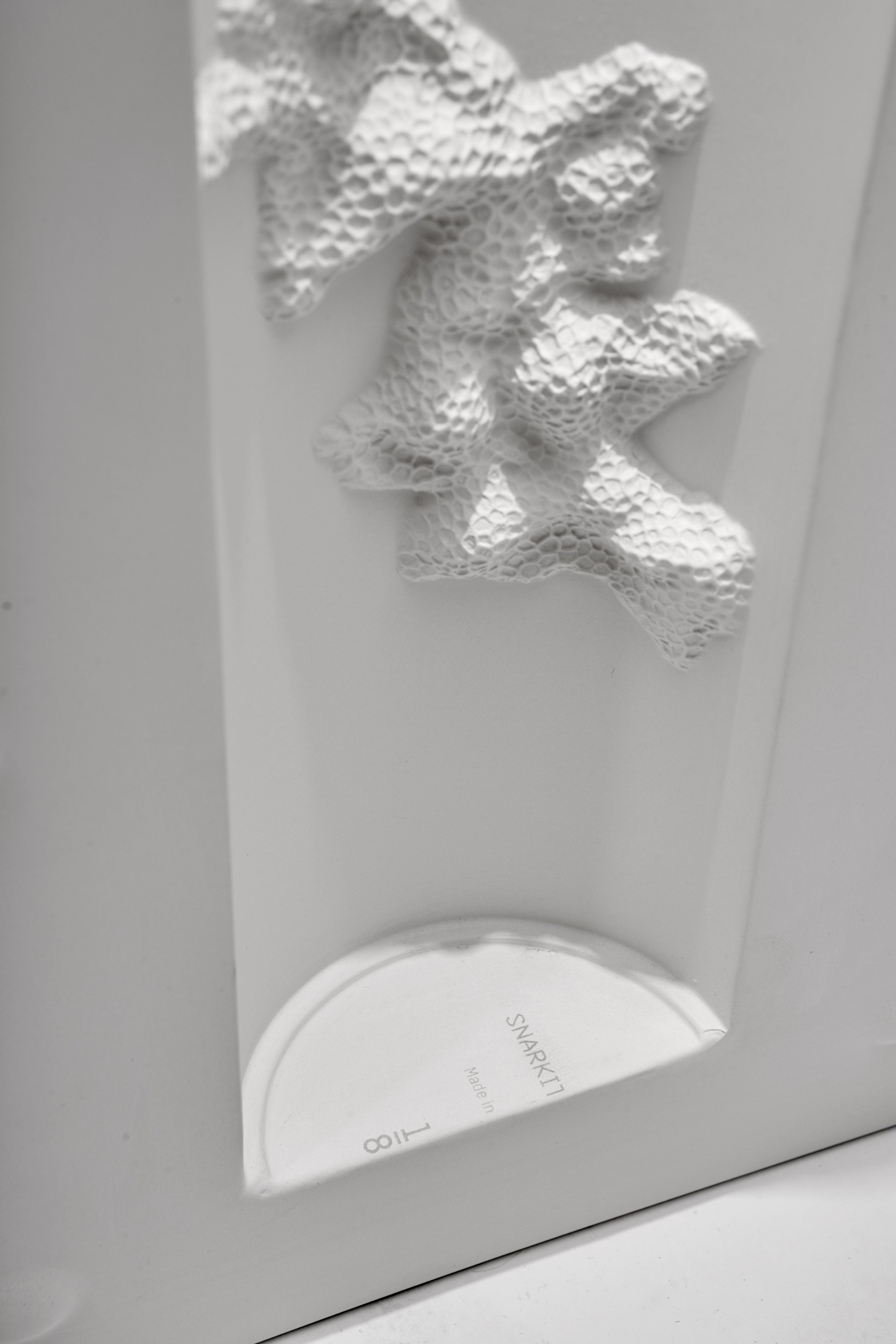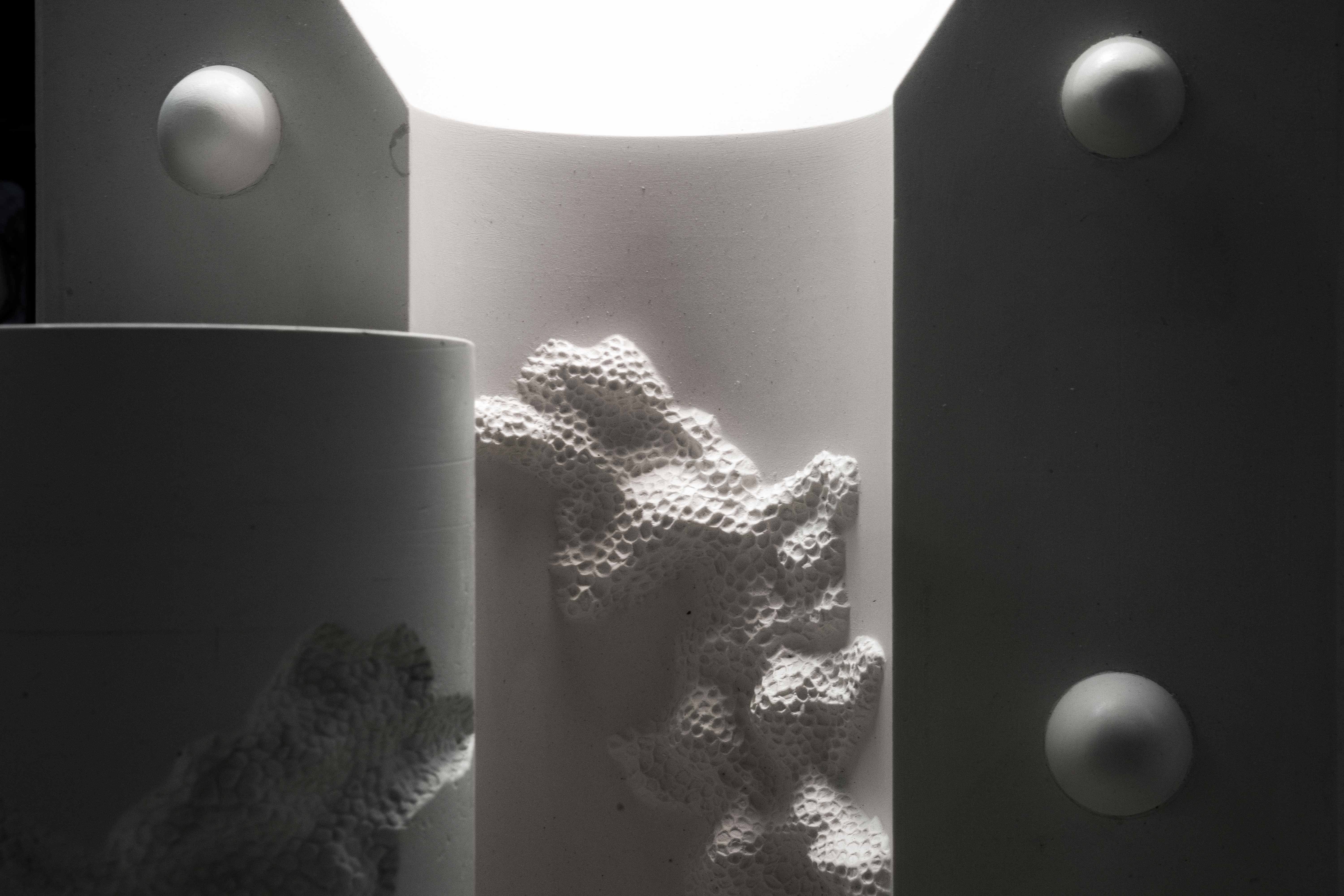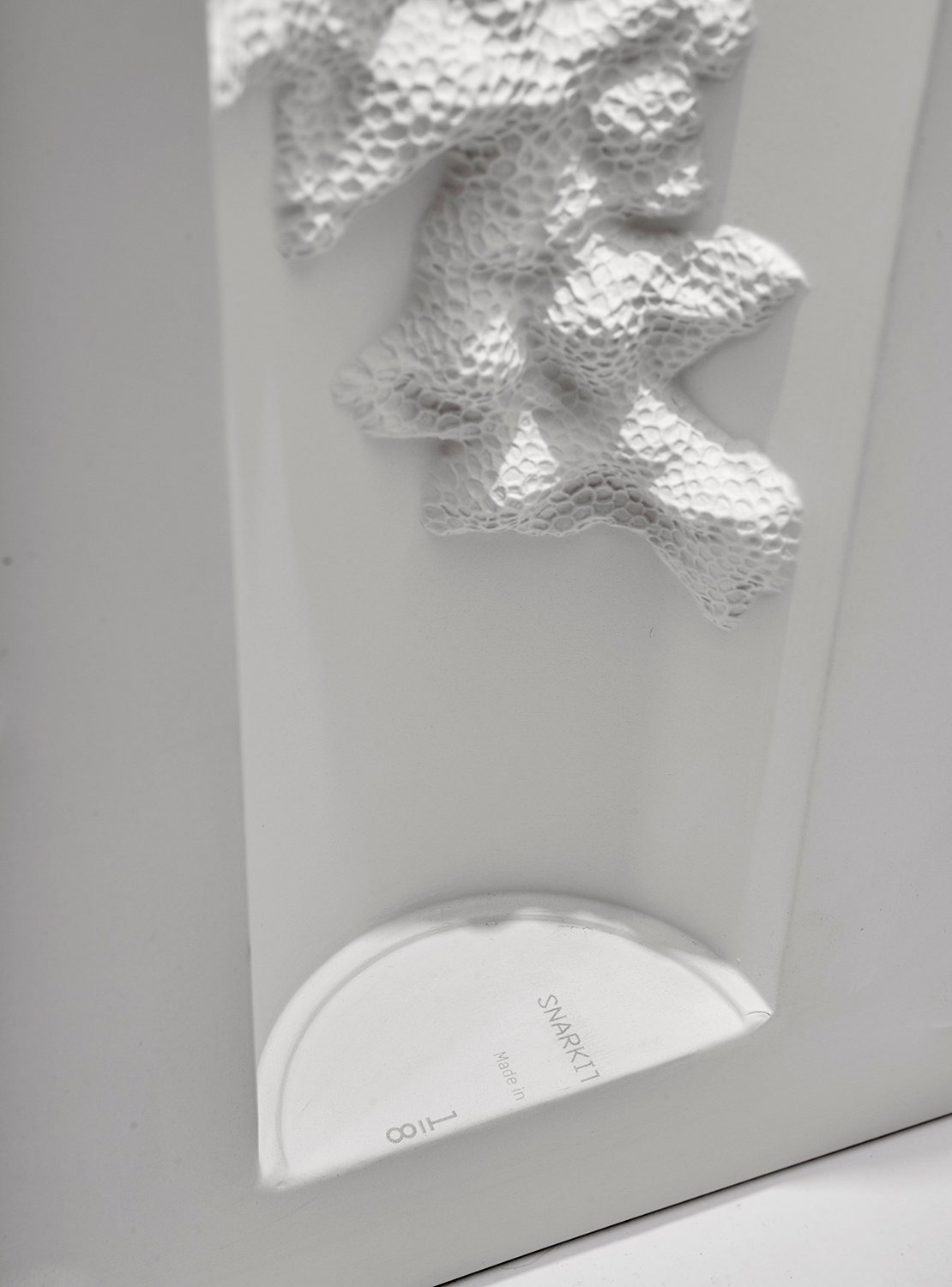
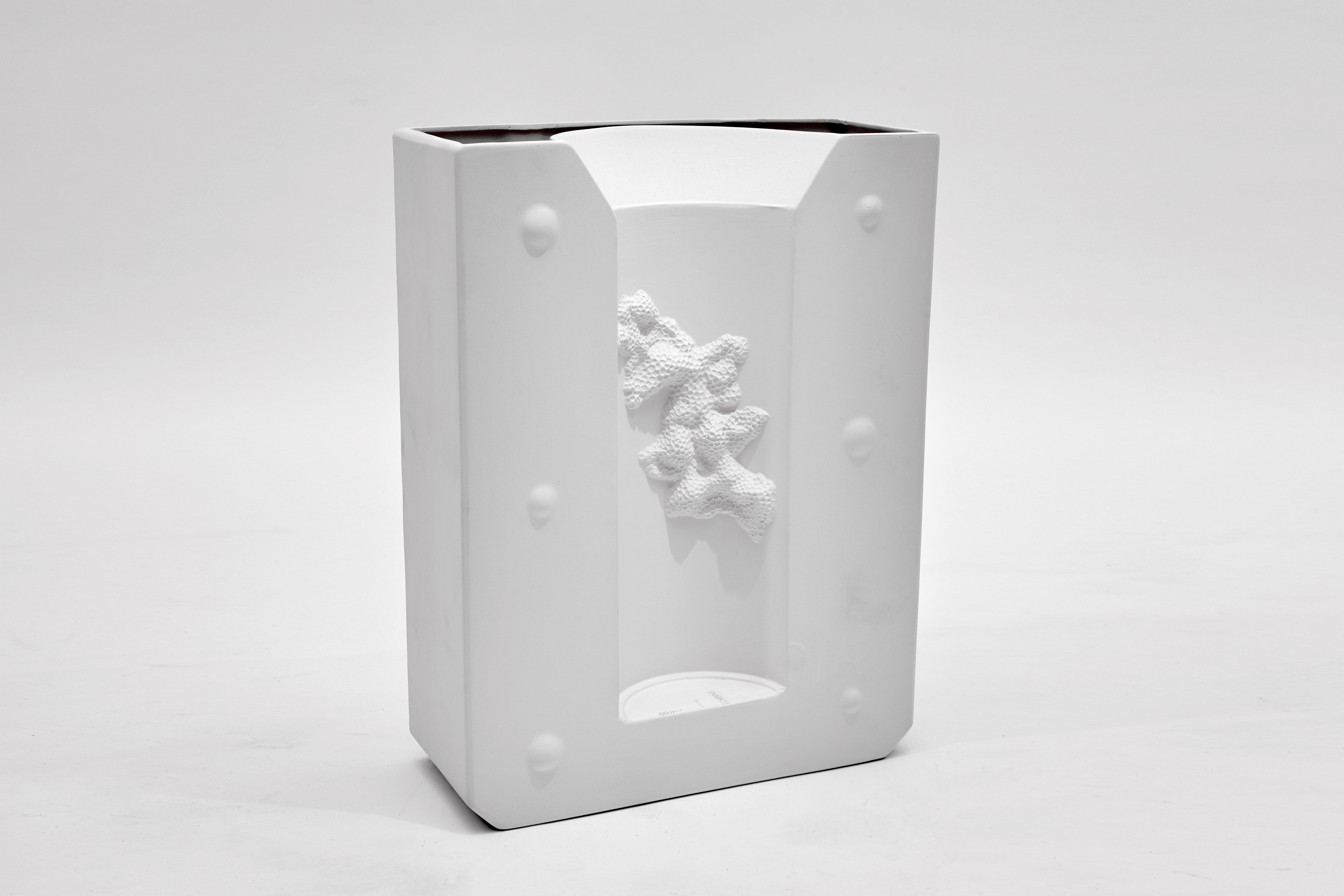
The concept for this collaboration with UK-based ceramics company 1882 Ltd. was to reveal aspects of the technical process used to create bone china. While Positive reflects the simple geometry of a cylindrical vase, Negative brings to life the mold that is used in the creation of the first piece.
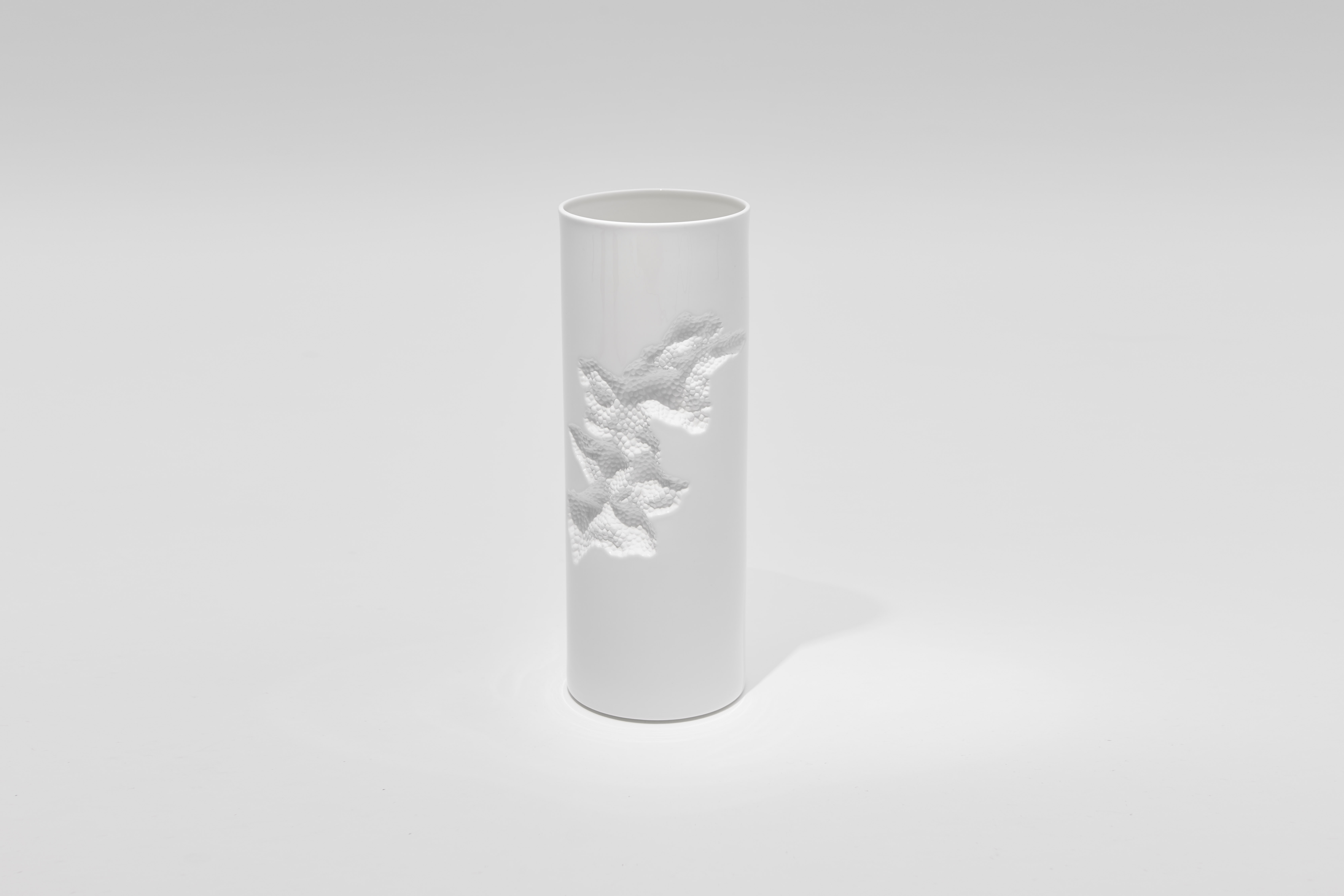
Normally unseen, the box-like volume is impressed with exactly one half of its companion Positive piece. Rendered in bone china instead of the plaster or plywood typically associated with a mold, Negative is also given a new function as an open vessel.
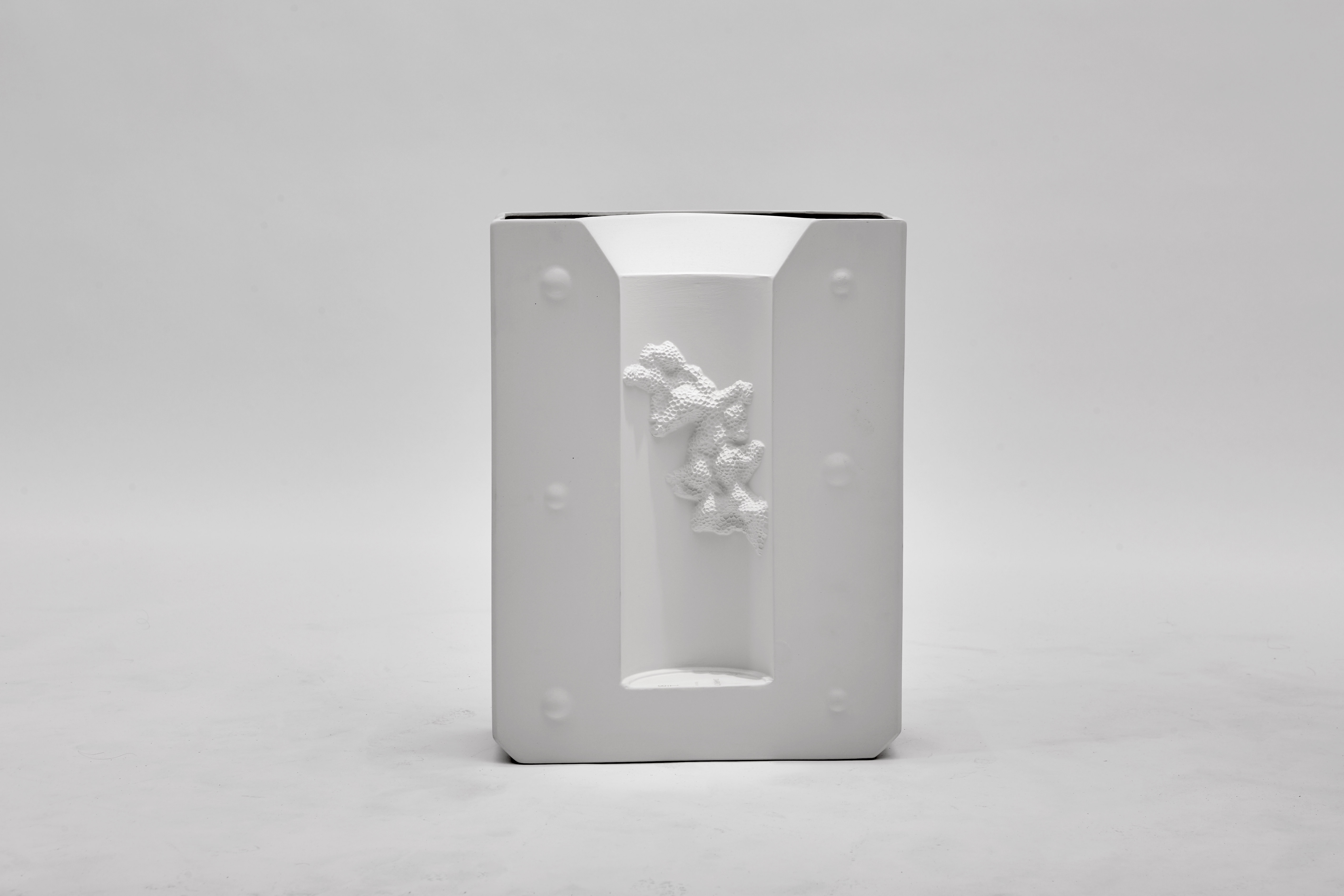
Both Positive and Negative also play on the fragility and solidity of bone china. The edge of Positive's cylindrical form appears as a thin surface, while inscribed into its surface is an unexpected interruption. A small volume is excavated from the side of the vessel, leaving an irregular textured surface that plays on the idea of a broken vase while contrasting with the smooth cylindrical surface of the piece.
